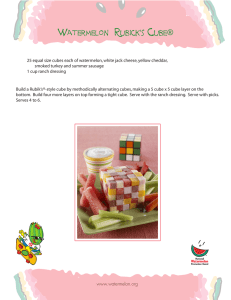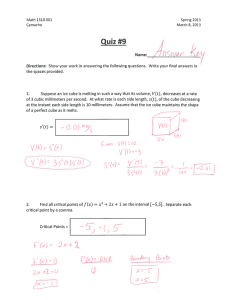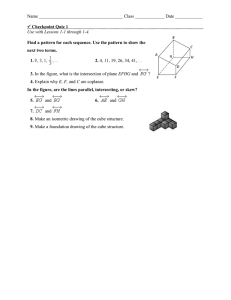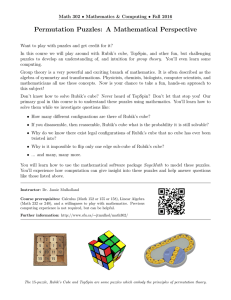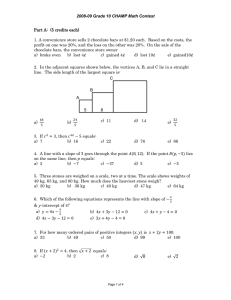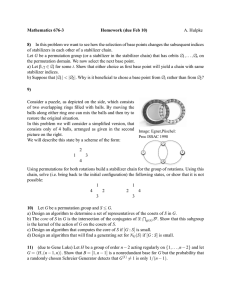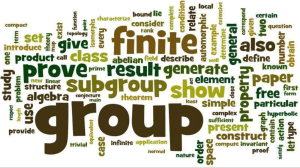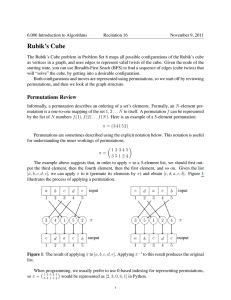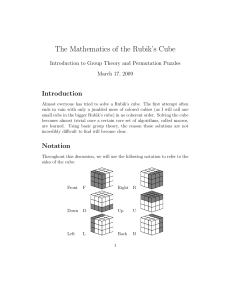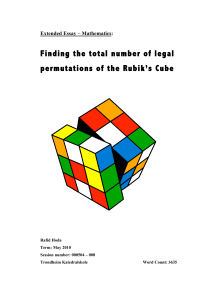Mathematics 366 Homework (due Dec. 2) 66) 67)
advertisement
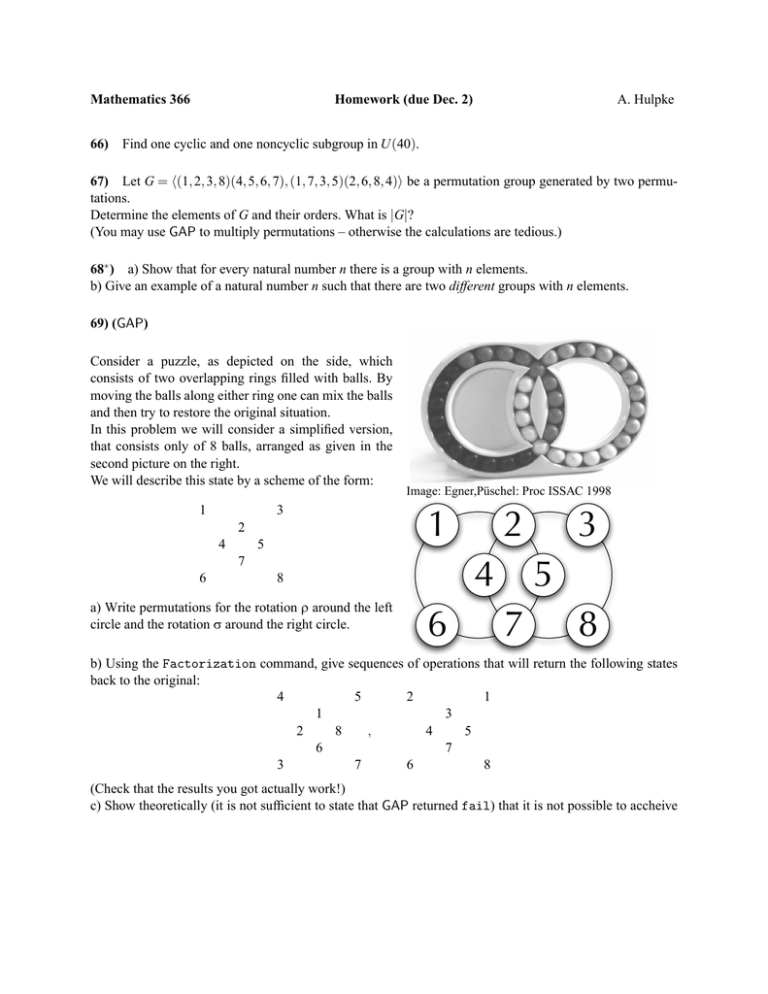
Mathematics 366 66) Homework (due Dec. 2) A. Hulpke Find one cyclic and one noncyclic subgroup in U(40). 67) Let G = h(1, 2, 3, 8)(4, 5, 6, 7), (1, 7, 3, 5)(2, 6, 8, 4)i be a permutation group generated by two permutations. Determine the elements of G and their orders. What is |G|? (You may use GAP to multiply permutations – otherwise the calculations are tedious.) 68∗ ) a) Show that for every natural number n there is a group with n elements. b) Give an example of a natural number n such that there are two different groups with n elements. 69) (GAP) Consider a puzzle, as depicted on the side, which consists of two overlapping rings filled with balls. By moving the balls along either ring one can mix the balls and then try to restore the original situation. In this problem we will consider a simplified version, that consists only of 8 balls, arranged as given in the second picture on the right. We will describe this state by a scheme of the form: 1 3 2 4 5 Image: Egner,Püschel: Proc ISSAC 1998 1 4 7 6 8 a) Write permutations for the rotation ρ around the left circle and the rotation σ around the right circle. 2 6 3 5 7 8 b) Using the Factorization command, give sequences of operations that will return the following states back to the original: 4 5 2 1 1 3 2 8 4 5 , 6 7 3 7 6 8 (Check that the results you got actually work!) c) Show theoretically (it is not sufficient to state that GAP returned fail) that it is not possible to accheive the following state: 3 1 2 4 5 7 6 8 70) The following six pictures depict all faces of a mixed-up 2 × 2 × 2 Rubik’s cube (with the same face labelling as the example in class): a) Suppose you unfold the cube to a cross-shaped diagram (as on the handout in class ), give the correct labeling of the faces. b) Write down a permutation that describes the mixup of this cube from its original position. c∗ ) Using GAP, determine a sequence of moves to bring the cube back to its original position. 71∗ ) (This is an engineering/geometry problem) You can buy variants of Rubik’s cube in 2 × 2 × 2, 3 × 3 × 3, 4 × 4 × 4, and 5 × 5 × 5. Why is no 6 × 6 × 6 cube produced? Problems marked with a ∗ are bonus problems for extra credit.


